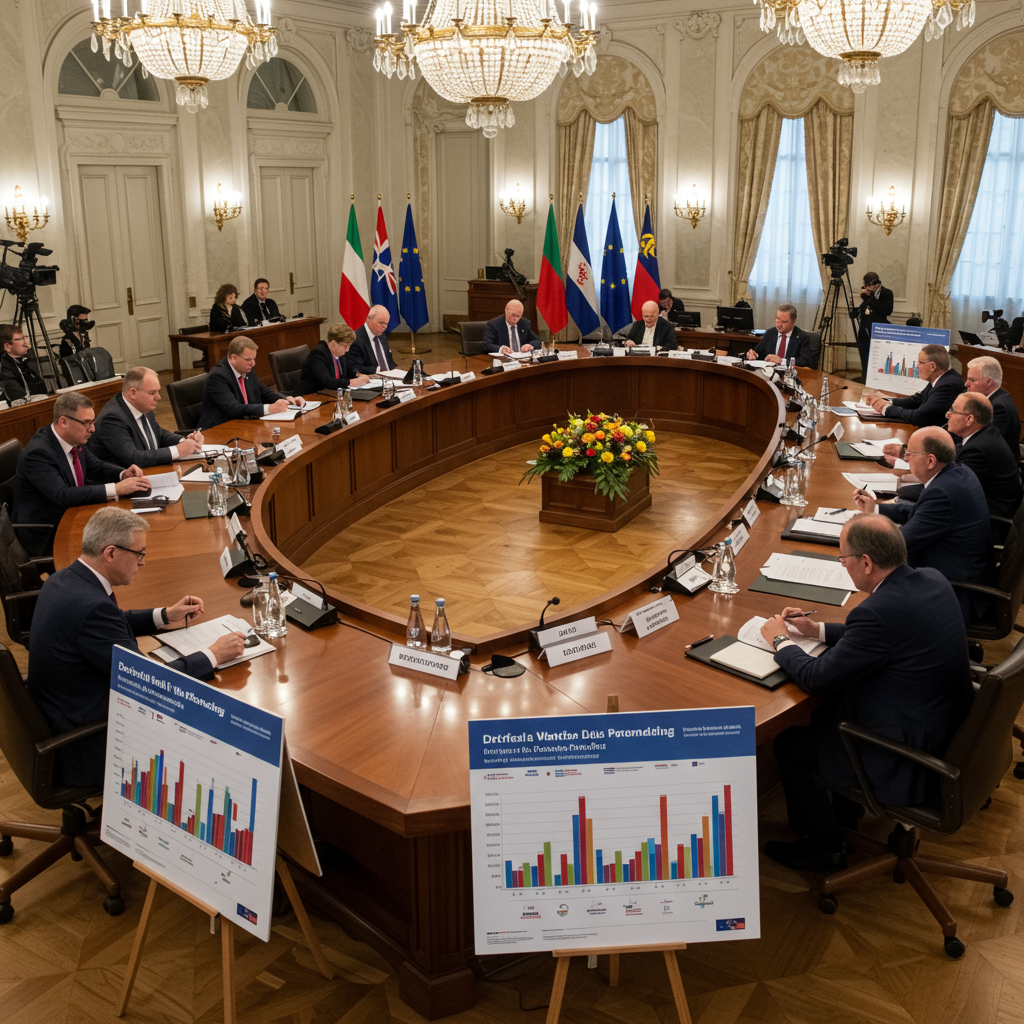NATO Pledges Massive Defense Spending Hike
European leaders are preparing to meet a key demand from former President Donald Trump at the upcoming NATO summit: a significant increase in defense spending. The 32-nation military alliance is set to pledge a dramatic rise in expenditure, targeting 5 percent of Gross Domestic Product (GDP) for defense efforts. This represents a watershed moment that could fundamentally rebalance transatlantic security dynamics.
The proposed 5 percent target is ambitious, breaking down into 3.5 percent allocated to core military expenditures and a further 1.5 percent for more broadly defined defense-related spending. This commitment is seen by many as a direct result of Trump’s persistent pressure on European allies to shoulder a greater share of the defense burden.
An administration official, speaking anonymously, acknowledged the pivotal role of Trump: “There is no way they would be going to 5 percent without Trump. So he sees this as a major win, and it is.” Trump himself plans to highlight this new pledge and his influence during a speech concluding the summit.
Beyond Trump: Responding to Real Threats
While accommodating Trump is a significant factor, the push for increased spending is not solely political theater. It is also dictated by the stark reality of the current security landscape, particularly Russia’s ongoing aggression in Ukraine and growing concerns about its future intentions. NATO’s own secret defense plans, designed to counter a potential Russian attack, reveal substantial capability shortfalls.
Meeting these strategic needs requires a massive ramp-up across the alliance. This includes a projected 400 percent increase in air and missile defenses, thousands more armored vehicles and tanks, and millions more artillery shells, alongside doubling logistical and support capabilities. Germany’s military, for instance, reportedly assesses that Russia could be preparing for a large-scale conflict against NATO by the end of this decade.
European leaders, including a coordinating group of nations described as “hardliners” on security (like the Netherlands, UK, Nordics, Baltics, and Poland), are increasingly recognizing the urgent need to bolster their own defense capabilities, independent of potentially unpredictable US policy. Danish Prime Minister Mette Frederiksen has strongly advocated for Europe to ramp up production and spending, criticizing lingering complacency and highlighting the dangerous alliance between Russia, Iran, and North Korea.
A Streamlined Summit Designed for “Success”
To ensure a smooth summit focused on delivering Trump’s desired outcome and projecting unity, organizers have significantly streamlined the event. Typically a two-day affair with extensive discussions and communiqués, the meeting has been reduced to approximately 24 hours. The agenda is tightly controlled, centering almost exclusively on the new spending pledge, which has been negotiated beforehand.
This deliberate brevity is partly to accommodate Trump’s known impatience with lengthy multilateral meetings but, more importantly, to minimize the risk of public disagreements on contentious issues. Topics like a new Russia strategy or in-depth discussions on the ongoing war in Ukraine are notably absent from the main agenda. Even Ukrainian President Volodymyr Zelenskyy is reportedly invited only to the opening dinner, not the core council meetings. This approach aims to avoid repeating past tense summits, like the 2018 meeting where Trump publicly threatened to withdraw the US from the alliance.
As one European defense official stated candidly, “He has to get credit for the 5 percent — that’s why we’re having the summit. Everything else is being streamlined to minimize risk.”
Challenges and Divisions Remain
Despite the broad agreement in principle on the 5 percent target, significant divisions persist, particularly regarding the timeline for achieving it. While the U.S. and some Eastern European nations already spending above 3.5 percent favor a 2030 deadline, many smaller countries and those furthest from the eastern flank are struggling to meet even the existing 2 percent target and are pushing for deadlines as late as 2032 or 2035. Spain, for example, is reportedly seeking an exemption. Even major powers like the UK have indicated difficulty hitting 5 percent quickly, targeting 2.5 percent by 2027 and potentially 3 percent by 2034.
Negotiations on the exact timeline are ongoing, with suggestions ranging from 2032 to 2035. The final wording of the pledge might allow countries flexibility, potentially delaying the full commitment for some members by a decade or more. Furthermore, questions remain about the vagueness of the “defence-related expenditure” definition, which could potentially lead to “creative accounting” rather than a true increase in military capability.
Ultimately, for many nations, the challenge isn’t just agreeing to the target but finding the substantial budgets needed to meet it. As one official noted, “It’s not so difficult to say, ‘Yes, we will, we will agree.’ But it’s very difficult to find the right path and to actually find the budget for that path.” Prioritizing the announcement of success in The Hague over resolving the complex implementation details seems to be a key strategy.
While uncertainties persist, the upcoming NATO summit is poised to deliver a significant political victory for Donald Trump in securing increased defense spending pledges from European allies. However, this move is equally driven by Europe’s growing recognition of the urgent need to enhance its own military capabilities in the face of escalating global threats and the potential for reduced US engagement in the future. The focus on spending marks a critical step toward potentially “Europeanizing” NATO and ensuring its long-term effectiveness in a challenging world.




